
More Helpful Content
Determining your ending inventory is critical when discussing inventory accounting. However, estimating how many sellable goods you have on hand at the end of a financial period can be difficult. That's why it's crucial to know how to evaluate the value of your ending inventory and which inventory valuation calculation method is ideal for your company.
Learn why ending inventory is a crucial aspect of calculating the cost of goods sold in this article. In addition, this simple guide provides 5 calculations for estimating ending inventory, along with full explanations. Choose the formula that works best for your company and see how ending inventory will help with projections and inventory management.
Ending inventory refers to the cost of the sellable goods you have on hand (or final goods) at the end of a period of accounting.
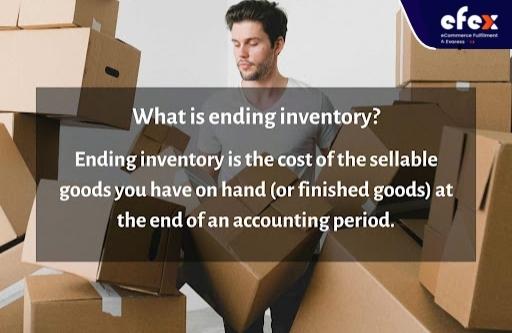
When an accounting period finishes, you calculate the value of your ending inventory by adding your beginning inventory value, net purchases, and subtracting the cost of goods sold (COGS). To calculate taxes and correctly measure the value of their business, most companies estimate ending inventory at the end of a reporting period and list it as an asset into their balance sheet. Determining the value of your ending inventory has an influence on your balance sheets and taxes, so it's critical to get the numbers right.
Although a physical stock level is one of the most accurate methods for assessing ending inventory, the objective is to determine the value of the stock on hand rather than the number of items. This is especially important when determining the worth of your business in order to get finance or make a pitch to investors. Even though the amount of inventory remains constant, there are various ways to calculate ending inventory. Each method yields a different outcome.
You'll continually be concerned about the number of goods sold and unsold. Until it is sold, eCommerce inventory might be considered a cost. Calculating ending inventory in eCommerce is both a corporate best practice and a crucial aspect of the accounting process. This is why.
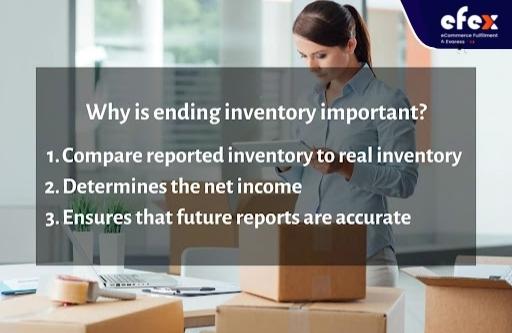
Make sure the statistics on your inventory balance sheet correspond to what's in your warehouse right now. Knowing your ending inventory in balance sheet ensures that the inventory you've recorded matches the real stock you have on hand. Inventory shrinkage might be caused by accounting errors, theft, or a variety of other concerns if your inventory levels are lower than they should be.
Similarly, you'll want to determine the exact income statement, or how much income you're generating from the products you're selling. When you determine ending inventory, you'll know whether your real inventory matches the inventory that was recorded. If the numbers don't add up, it might mean you paid too much for the items in the first place, based on current market worth, or it's time to reconsider your pricing approach.
Do you recall how beginning inventory is subtracted from final inventory? It also works the opposite way around. The beginning inventory of a given accounting period is computed using the ending inventory of the preceding period. The ending balance of the preceding reporting period is used to calculate the beginning balance.
As a result, it's critical to calculate the exact ending inventory balance. As there are various methods for calculating ending inventory, it's advisable to stay with one every year to minimize inconsistencies in subsequent reports.
The ending inventory balance formula is straightforward:
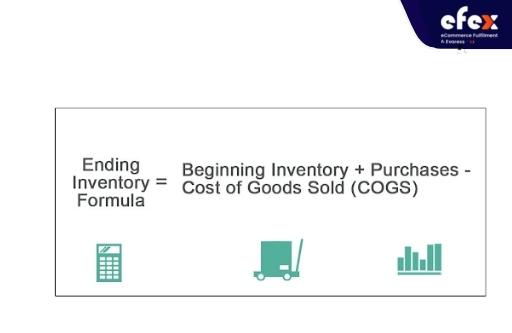
The ending inventory of the previous period is your beginning inventory. The products you've purchased and added to your inventory count are known as net purchases. The whole cost of buying or manufacturing finished items that are ready to sell is included in the cost of goods sold. The simplest method for calculating ending inventory is to do a physical inventory count. A physical count, on the other hand, is rarely necessary, especially if you have a huge volume of goods to manage.
Luckily, there are more accurate and efficient techniques to determine ending inventory. For example, establishing the value of ending inventory is a snap when using a third-party logistics (3PL) provider and integrating their fulfillment technology with an inventory management solution.
Ending inventory calculator need data integrity, and keeping an exact numbering at the end of each accounting period allows managing actual vs. planned inventory, reducing unexpected stockouts and inventory shrinkage. Having an exact inventory count is the most critical variable in estimating ending inventory. Manually-count inventory is time-consuming, especially for organizations that are growing quickly.
Using a user-friendly cloud-based WMS, a tech-savvy 3PL can assist you to automate inventory management and giving real-time inventory data. Regular stock cycle counts with a 99% overall accuracy should also be included in the SLAs of a fulfillment partner to provide the most accurate data for estimating ending inventory costs.
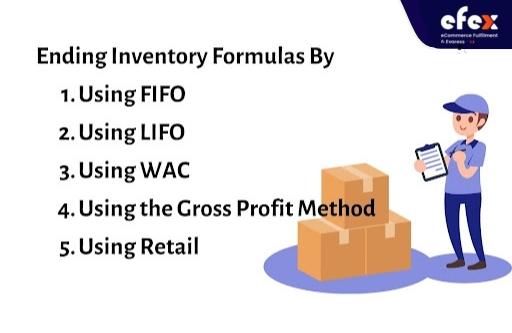
The First In, First Out (FIFO) inventory management system assumes that the first items purchased or manufactured would be the first items to be sold.
For instance, suppose you start an accounting month by purchasing (or manufacturing) 200 pieces of a specific SKU for $5 each. Later in the accounting period, you make a replenishment order for 200 extra units at $7 per unit. Throughout the accounting period, you sold 315 units.
To determine your cost of goods for that accounting period, multiply the cost of the first 150 units (5 x 150 = $750) by the 165 unit sales from your replenishment order (7 x 165 = $1155), resulting in a total COGS of $1905. With this COGS value, if you use the FIFO ending inventory formula, you'll get the following value of ending inventory FIFO:
$1000 (inventory) + $1400 (net purchases) – $1905 (cost of goods sold) = $495 (ending inventory)
The Last in First Out (LIFO) inventory monitoring technique presupposes that the most recently acquired or manufactured item is sold first.
Assume you've purchased (or made) 200 units of an SKU for $5 each. You then make a replenishment order for 200 units for $7 per unit later in the accounting period. Next, you sell 315 units during the course of the accounting period.
You would take the value of the final 200 units you purchased (7 x 200 = $1400) and the 150 units you already sold from your first order (5 x 150 = $750) to determine your COGS using the LIFO technique, resulting in a total COGS of $2150 for the period of accounting.
If you use the ending inventory formula with this COGS amount, you'll get the following ending inventory LIFO:
$1000 (beginning inventory) + $1400 (net purchases) – $2150 (COGS) = $250 (ending inventory)
The value of all inventory bought during the financial period is calculated by dividing the number of units available to arrive at WAC (weighted average cost). When utilizing the WAC method to calculate ending inventory, each unit is assigned the same weighted value.
We'll suppose that you purchased (or made) 200 units of an SKU for $5 each. You then make a 200-unit replenishment order at $7 per unit. You sell 315 units during the course of the accounting period. With the WAC technique, divide the cost of both orders in total by the total number of units (2400 / 400 = $6 per SKU).
Your COGS would be $1890, determined by multiplying your weighted average cost $6 by the quantity of units sold (6 x 315). If you apply this COGS amount in the ending inventory formula, you'll obtain the following ending inventory:
$1000 (beginning inventory) + $1400 (net purchases) – $1890 (COGS) = $510 (ending inventory)
Although the gross profit method is useful for quickly predicting ending inventory, it is not suited for end-of-year bookkeeping since it does not include a physical inventory count. A new variable in the calculation is the cost of products in stock for sale determined by taking the cost of initial inventory and the value of replenishment inventory. The gross profit closing inventory value is calculated as follows:
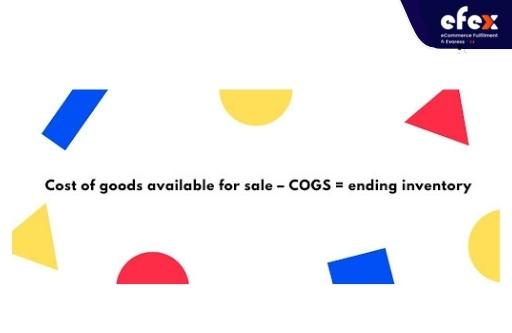
We'll use the same business example above. In this case, your business ordered 200 units at $5 each to start with, then made a replenishment order for 200 units at $7 each. This results in a $2400 total cost of products available for sale. The COGS is the next variable, but its value is decided by the gross profit margin. We'll stick with the same scenario and assume the SKUs in question are sold at the price of $10, resulting in a 40% gross profit margin.
Again, let's assume you sold 315 units for a sum of $3150 during the accounting period. Then multiply by your gross profit margin ($3150 x 40%) to arrive at $1260 in COGS. Simply subtract your COGS from the cost of things offered for sale to arrive at $1140 in ending inventory ($2400– $1260).
A physical inventory count is not required for the retail technique, as it is for the gross profit way. It can be a simple way to get a figure of ending inventory if you have the variables handy; however, it's not a very dependable method, especially if your prices vary regularly.
Most eCommerce and multichannel businesses utilize technology like automatic repricers to change prices on a regular basis in order to earn the buy box and stay on top of search results. For those reasons, we won't go into considerable length on the retail strategy. The retail method's ending merchandise inventory formula is:
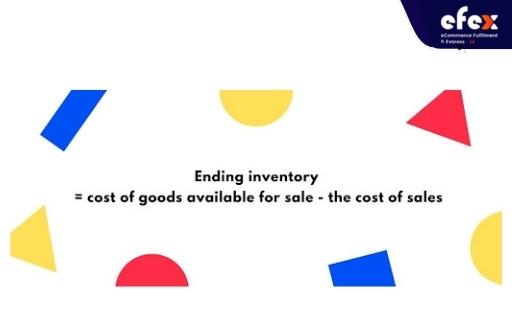
The cost of items on hand for sale can be calculated using the same procedure as the gross margin technique. You need to multiply your sales in total by your cost to retail percentage to calculate your cost of sales.
Understanding and estimating ending inventory is crucial for your organization, but it doesn't have to be complex. We've already assisted you with a few common approaches for determining ending inventory with detailed ending inventory example. Apart from those approaches, working with a third-party logistics provider and integrating their technology will make inventory tracking considerably easier and simpler.


